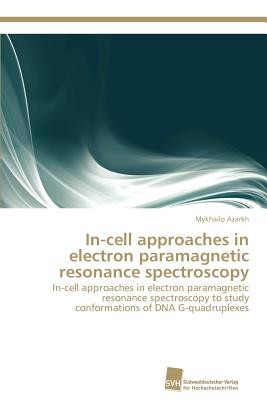
- We will send in 10–14 business days.
- Author: Mykhailo Azarkh
- Publisher: Sudwestdeutscher Verlag Fur Hochschulschriften AG
- Year: 2012
- Pages: 152
- ISBN-10: 3838134400
- ISBN-13: 9783838134406
- Format: 15.2 x 22.9 x 0.9 cm, minkšti viršeliai
- Language: English
- SAVE -10% with code: EXTRA
In-cell approaches in electron paramagnetic resonance spectroscopy (e-book) (used book) | bookbook.eu
Reviews
Description
Double electron electron resonance (DEER) is an EPR technique which allows for distance measurements on the nanometer scale. Here, EPR-based distance measurements were extended to in-cell applications. From evaluation of nitroxides for experiments in intracellular environment of Xenopus laevis oocytes and through proof-of-principle experiments optimal parameters for performing in-cell DEER were found. On the example of G-quadruplexes formed by oligomers of human telomeric DNA, DEER was shown to be applicable for structural identification of biological objects under their native conditions.
EXTRA 10 % discount with code: EXTRA
The promotion ends in 21d.22:06:08
The discount code is valid when purchasing from 10 €. Discounts do not stack.
- Author: Mykhailo Azarkh
- Publisher: Sudwestdeutscher Verlag Fur Hochschulschriften AG
- Year: 2012
- Pages: 152
- ISBN-10: 3838134400
- ISBN-13: 9783838134406
- Format: 15.2 x 22.9 x 0.9 cm, minkšti viršeliai
- Language: English English
Double electron electron resonance (DEER) is an EPR technique which allows for distance measurements on the nanometer scale. Here, EPR-based distance measurements were extended to in-cell applications. From evaluation of nitroxides for experiments in intracellular environment of Xenopus laevis oocytes and through proof-of-principle experiments optimal parameters for performing in-cell DEER were found. On the example of G-quadruplexes formed by oligomers of human telomeric DNA, DEER was shown to be applicable for structural identification of biological objects under their native conditions.


Reviews